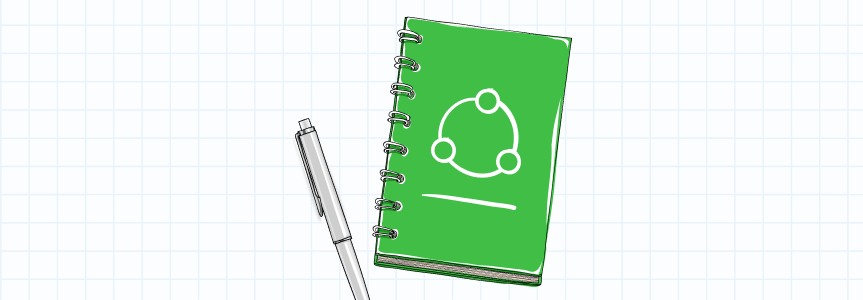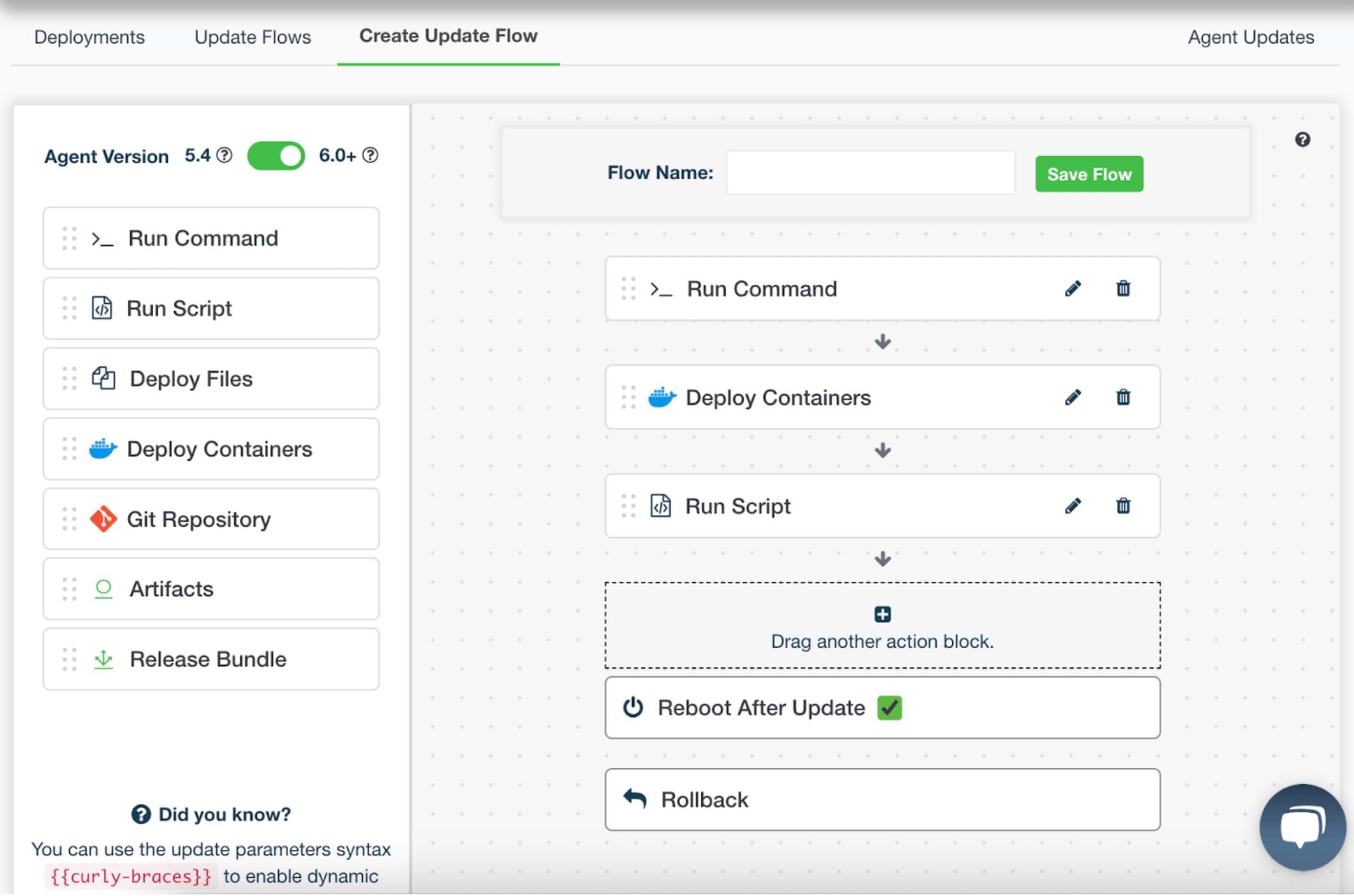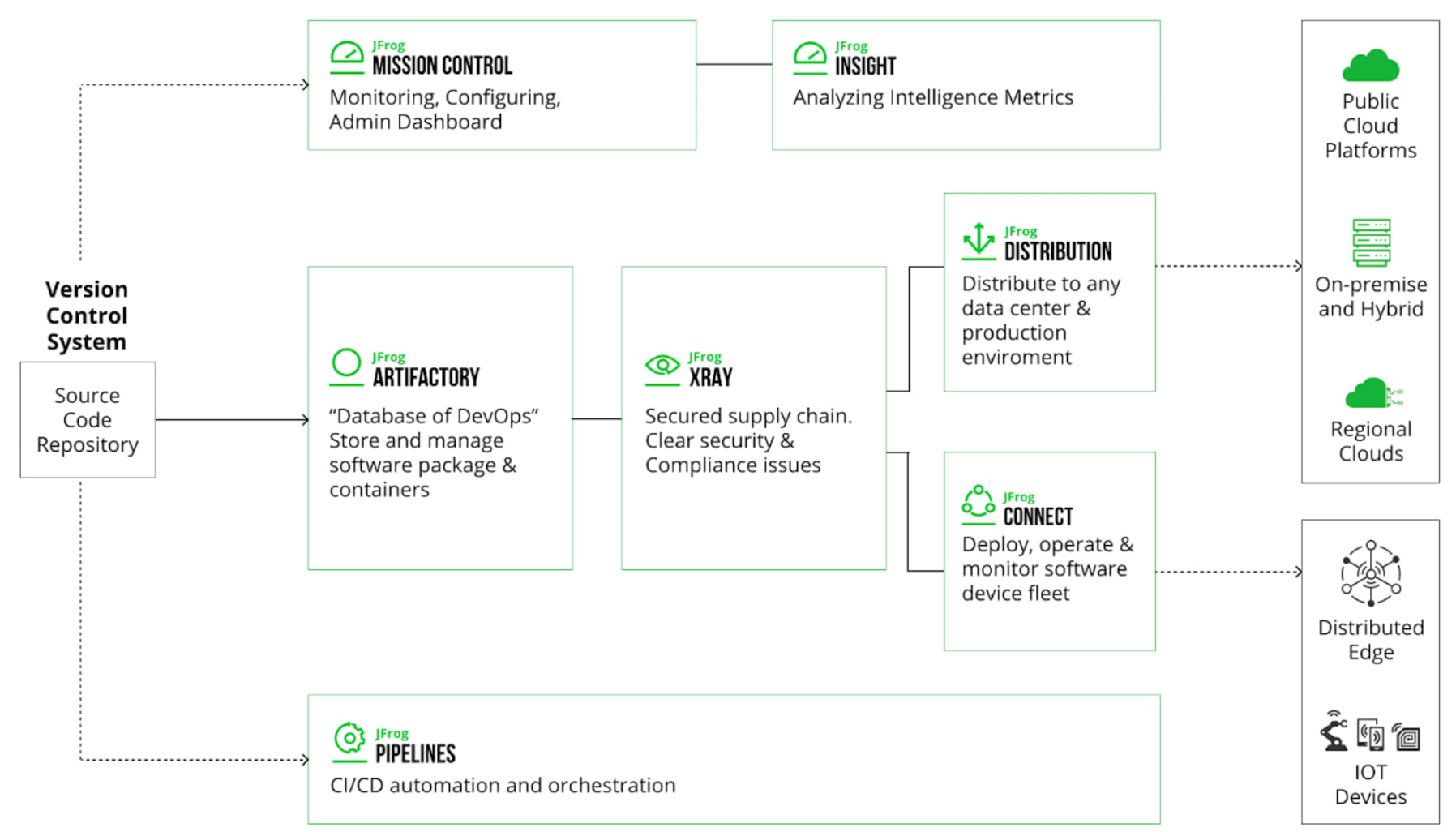What is JFrog Connect?
As IoT moves into mainstream, more and more projects graduate from proof of concept (PoC) to production. This is when IoT security and deployment become growing concerns. In fact, a recent survey found that IoT developers rank security (46%) and deployment (31%) among their top three concerns, up from 39% and 23%, respectively, the year prior.
There are good reasons for these concerns. First, the process of updating edge devices is usually siloed from software development and continuous integration (CI), which inevitably worsens operational workflow challenges. Second, an increasing proportion of code in production devices originates in open source. A research study found that 92% of audited code in the IoT sector was open source, and that 64% of IoT codebases contained vulnerabilities. This makes solving the challenge of software supply chain management critical to the long-term success of IoT projects.
JFrog Connect was built to help teams deal with these issues at scale, saving them time and effort. With Connect, organizations can manage the delivery of software updates to any connected device automatically, continuously, and securely. All that while working seamlessly together with the industry-leading JFrog Software Supply Chain Platform. Keep reading to learn what JFrog Connect is, how IoT teams use it, and how Connect helps companies manage a distributed fleet, while reducing risks in their software supply chain.
| Try JFrog Connect for free |
What is JFrog Connect?
JFrog Connect is a comprehensive solution for updating, managing, monitoring and troubleshooting Linux-based edge and IoT devices at scale. It’s fully integrated with the rest of the JFrog Software Supply Chain Platform, empowering developers to automate DevSecOps activities with best practices and continuous governance “from developer to device”. As a natural extension of the JFrog Platform, Connect dramatically simplifies deployment flows while increasing operational efficiency and IoT security throughout the software development lifecycle.
Here are just a few of the ways Connect customers benefit from using Connect:
- A Telehealth company was able to expedite troubleshooting and remediation, lower field operational costs, and scale its edge device fleet.
- An Industrial Automation company was able to enhance fleet tracking and performance with completely automated management of devices running in the field.
- An AI powered computer vision company was able to automate software updates to fleet devices deployed worldwide, while saving time and effort.
What is an IoT platform?
Small IoT projects driven by a few developers, such as lab experiments or proof of concept, are easy. Deployments to a handful of devices can be comfortably managed directly by the developer. The real challenges arise when adding more devices, more developers, and geographically distributed devices with networks that can often be unreliable. If not properly supported, this kind of expansion can face scalability roadblocks. That’s where IoT platforms come in.
An IoT platform monitors, controls, and manages IoT endpoints in a highly scalable manner. Developers need to be able to access their devices remotely, deal with networks and firewalls, and consistently monitor their state and performance. Automation, like getting an automated alert when an update fails or a device is down, is key to managing an expanding IoT device fleet.
Benefits of an all-in-one IoT software deployment solution
Unified IoT platforms like JFrog Connect and the JFrog Platform help teams deploy, update, and manage their edge and IoT devices from pilot to fleet wide production. They do this by enabling IoT, DevOps, and security teams to collaborate together more fluidly, thereby producing efficient, scalable, and secure edge deployments.
This melding of cross-functional processes, done well, delivers efficiency, speed, and reliability. And with the rate of innovation today, companies must be efficient, quick, and reliable in order to remain competitive in the market.
Why JFrog Connect?
As an extension to the JFrog Platform, JFrog Connect is the ultimate Dev + Sec + Ops solution for managing connected devices at scale. Using Connect, teams can update, control, monitor, and manage remote Linux & IoT devices with automation capabilities – all from a single pane of glass.
Let’s explore the key functionality and benefits of Connect in more detail.
Continuous software updates: Automate over-the-air (OTA) update deployments from code to device. Connect uses a unique approach of “update blocks”, which supports the deployment and running of scripts, files, artifacts, containers, etc., enabling easy and reliable deployments to large fleets of devices so teams can apply new features, bug fixes, or security patches with ease. Notably, Connect’s Update Flow tool has native support for Docker Containers and Docker Compose. This is particularly useful for Connect users given the growing popularity of containers in IoT Edge deployments.
Comprehensive fleet visibility: Teams can sort and filter devices based on hierarchical groups and tags, creating an easily manageable inventory of both software and hardware. Users can also view the details of each device, including its state, OS, model, location, data, communication, and application version.
Monitoring and alerts: Connect monitors device resources (i.e. CPU, RAM, disk) and detects anomalies automatically. These capabilities, along with the ability to integrate with all third-party apps, mean that developers are immediately alerted of issues, so they can resolve them quickly and efficiently.
Accelerated troubleshooting and remediation: Remote Control (terminal access) and Remote Access (port forwarding) enable IoT teams to connect to any device and view its traffic in the local network. These, alongside automatic log collection and monitoring, allow developers to easily reproduce and debug issues, accelerating remediation.
DevOps for connected devices: As part of the end-to-end JFrog Platform, Connect provides a single source of truth for developers, security, IT, and ops, enabling them to collaborate more efficiently, achieve faster time-to-value, mitigate risks, and minimize downtime.
Connect is a powerful solution that gives teams the ability to maintain their product fleet with visibility, flexibility, and ease. For a more detailed look into Connect’s technical functionality, visit JFrog documentation.
| See JFrog documentation |
How does Connect work with other JFrog tools?
JFrog Connect extends the JFrog Platform with IoT edge deployment capabilities. As IoT development and deployments become mainstream, they must effectively integrate with established release management and software supply chain processes. JFrog Connect’s tight integration with JFrog Artifactory and JFrog Xray provide an end-to-end solution from developer to device.
For brief context, Artifactory is the leading solution for managing and distributing binaries and artifacts throughout the software supply chain. JFrog Xray helps to ensure software artifacts are free from known vulnerabilities and compliance violations. These solutions combined provide DevOps and security teams with collaborative processes they need to deliver innovative software faster and more securely.
JFrog Software Supply Chain Platform
With this unified platform, IoT development and deployments can seamlessly integrate with established software supply chain security and DevOps best practices to accelerate and secure their software delivery in the cloud, across multiple clouds, and at the edge.
To learn more about how teams use Connect, check out this Ndustrial case study or this construction site safety use case.
What is DevOps for connected devices?
IoT is in the early stages of adoption at most companies. But just like the mobile boom of the early 2000s, companies are destined to adopt IoT at scale. Before mobile was established, it wasn’t built into existing DevOps processes – it was treated more like a science experiment. Today, there’s a DevOps process built around mobile at virtually every company. Experts predict with high confidence that IoT will follow a similar path.
While adopting DevOps for IoT edge devices may seem straightforward, there are a few specifics to consider. For instance, how do you maintain devices when they’re behind firewalls, deployed outside of the data center security perimeter, or you’re working with limited connectivity?
Curious? We’ve got you covered. Check out our blog to learn six keys for implementing DevOps for IoT.
FAQs
What OS does JFrog Connect support?
Connect works with common Linux distributions like Yocto, Debian, Ubuntu, Raspberry Pi OS (formerly Raspbian), and more.
What is the footprint of JFrog Connect Agent?
The Connect agent footprint will depend on the architecture of your devices. In general, the size is 3MB, it uses about 10MB RAM, and consumes little CPU cycles.
How do I get a Connect license?
There’s no need to pay for a license to get started! You can start using JFrog Connect anytime, for free.
For more FAQs, visit JFrog documentation.
Summary
When companies lack secure and reliable IoT management solutions, they can face severe consequences like service outages, unnecessary site visits, expensive recalls, and more.
Connect brings a new level of traceability, automation, and IoT security to the world of connected devices. JFrog’s integrated DevOps platform empowers organizations to manage anywhere from one to multiple thousands of connected devices.
If you’re ready to manage your edge deployments with the convenience of an easy-to-use, unified platform, start a free trial today.






